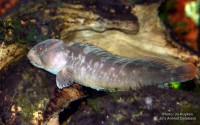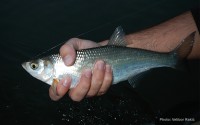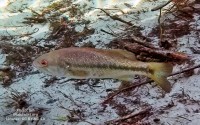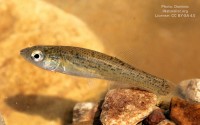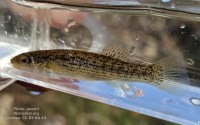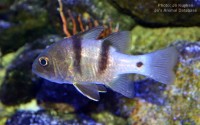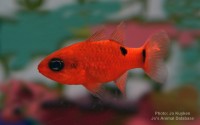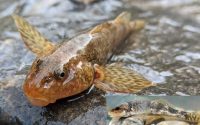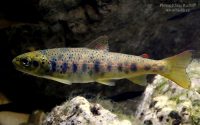Broadfin sawtail catshark
(Galeus nipponensis)
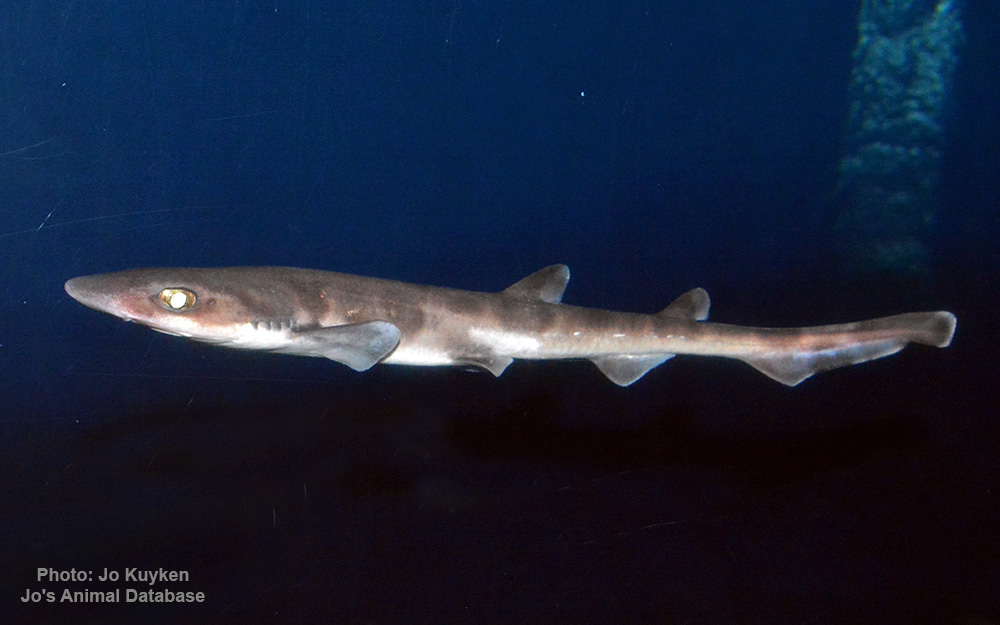
Image source: Jo's Animal Database
Classification
General data
The broadfin sawtail catshark (Galeus nipponensis) is a common species of catshark, part of the family Scyliorhinidae. It is found on or near the bottom at depths of 150–540 m (490–1,770 ft), from southeastern Japan to the East China Sea.
A slender species growing to 68 cm (27 in) long, this shark is characterized by a fairly long, pointed snout, a series of indistinct, dark saddles along its back and tail, and a prominent crest of enlarged dermal denticles along the dorsal edge of its caudal fin. In addition, adult males have very long claspers that reach past the anal fin. The broadfin sawtail catshark is an opportunistic predator of bony fishes, cephalopods, and crustaceans, with immature and mature sharks being primarily piscivorous. It is oviparous and reproduces year-round.
The snout is rather long, flattened, and pointed, with large nostrils that bear triangular skin flaps on their anterior rims. The sizable eyes are horizontally oval and equipped with rudimentary nictitating membranes (protective third eyelids). Beneath each eye is a subtle ridge, and behind is a small spiracle. The capacious mouth forms a long, wide arch; well-developed furrows are present at the corners. The small teeth each have a narrow central cusp flanked by usually one, sometimes more, smaller cusplets on both sides. The five pairs of gill slits are short, with the last pair over the pectoral fin bases.
The first dorsal fin is roughly triangular, with gently convex anterior and posterior margins, and originates over the midpoint of the pelvic fin bases. The second dorsal fin is slightly smaller than the first and similar in shape, and originates over the latter portion of the anal fin base. The pectoral fins are medium-sized and broad. The pelvic fins are sizable and relatively low, with angular corners. In adult males, the inner margins of the pelvic fins are partially fused to form an \\\"apron\\\" over the bases of the claspers, which are very long and thin, reaching past the origin of the small anal fin. The base of the anal fin measures 8–10% of the total length, much less than the distances between either the pelvic and anal fins or the two dorsal fins. The anal fin of the male is 2% shorter than that of the female, which may be related to the function of the unusually long claspers. The caudal peduncle is almost cylindrical, and leads to a low caudal fin with a small lower lobe and a ventral notch near the tip of the upper lobe. The dermal denticles are small and overlapping, each with a leaf-shaped crown bearing a median ridge and three marginal teeth. There is a saw-toothed crest of enlarged denticles along the upper edge of the caudal fin. This species is dark gray above, with a series of faint darker saddles along the body and tail. The underside, inside of the mouth, and trailing margins of the pectoral and dorsal fins are white.

